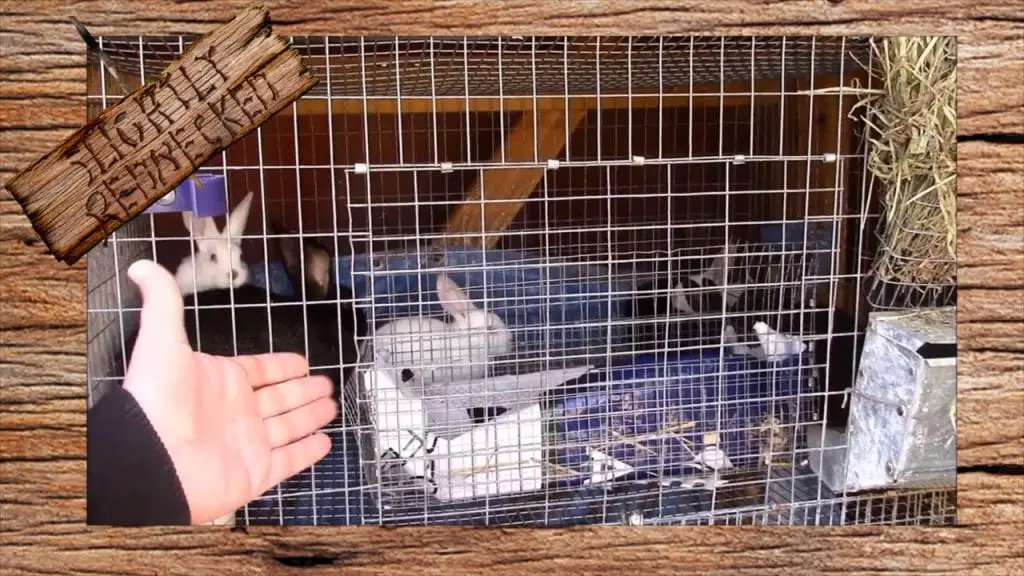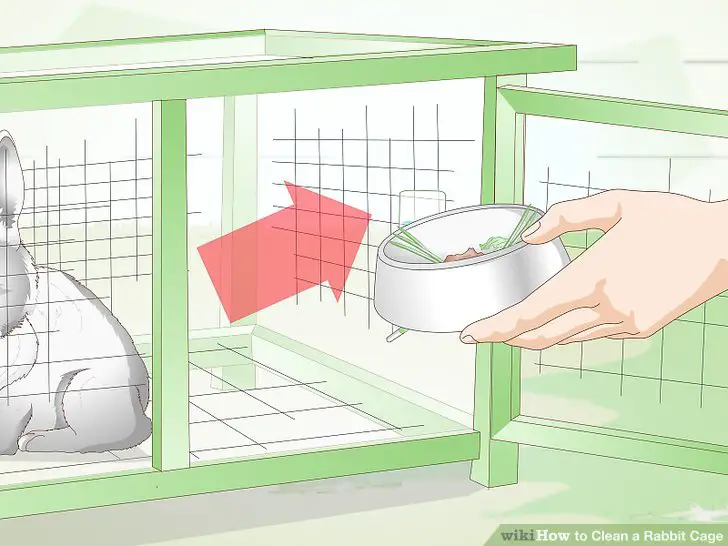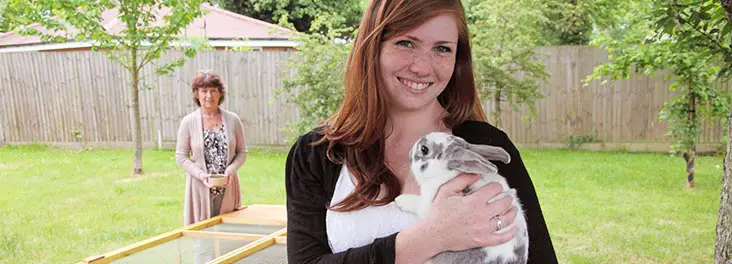Rabbits are indeed animals known for their effective and quick breeding. In the process of breeding, it will require more work, which may seem not fit for everybody. However, I believe that if you simply want a rabbit for a pet, you will handle everything from the start until the end. Just have a good pair of rabbits to breed and wait for success and failure. Know how much work is ahead of you. Know as well as how to take good care of a breeding mother rabbit.
What You Will Need to Follow in Caring for a Breeding Mother Rabbit
Below is what I suggest you consider preparing:
- Space (Enough for the breeding mother to hold herself and her young)
- Nest Box
- Soft Grass Hay
Optional materials
These materials are what I used, which you might also like to consider.
- Paper towels and old rags. What these can promise is comfort for your doe. I also add up scraps of a shredded newspaper and even paper towels. The good thing about these nesting materials is that I can put them down to bring warmth to the newborn kits. These are just essential for their mere survival.
- Multiple Boxes. Since I was a novice in taking good care of a breeding mother rabbit and I wasn’t sure of the box I will use, I just provided different sizes of boxes. I gave it to the mother rabbit until then. I noticed it stayed with one that it wants.
- Cheap & Plastic Cat Litter Box. I created a perfect box for nesting using this optional. But, I made sure it will be a cheap and plastic cat litter box. You won’t go facing the trouble of making your own nest.
Additional Hygienic Items
- Soap solution of combined mild and warm water
- Non-toxic soap like the liquid castile soap
- Fresh Water
- Bath Towel
- Dish
Food Stuff
- Vegetables like kohlrabi, carrot tops, watercress, basil, beet greens, and mustard
Instructions:
Check out this video version of taking care of a breeding mother rabbit below.
Now get excited about the next steps that will let you totally be engaged in the process.
So, let’s go!
1. Provide It with Needed Space. I am glad to see the mother rabbit holding herself and her young. Just remember that a doe can give birth to about fourteen kits and baby bunnies at a time. That’s why I have it enough and spacious room.
2. House it in a crate, cage, or hutch in just a minimum of 25 to 30 inches by 15 inches. It’s when the mother rabbit and the kits will stretch out, move around, and exercise with no much difficulty. If the rabbit has no living space of about 25 to 30 inches by 15 inches, it now is a good time to invest or build in a new one. The maternity lodging of a doe should somehow be private. It must only have less noisy appliances, few light sources, and nerve-wracking distractions around the area.
3. Prepare for a nest box filled with hay right inside the cage of a doe. Get a small-sized cardboard box, wooden crate, and open container. Place it in another corner of the cage. Get the bottom covered with three to six inches of grass hay.

The structure you use should be spacious enough. It must also be low enough for the mother rabbit to come out easily. It will use its space to move around until then that it is ready to give birth or to kindle.
- Offer the doe with comfortable materials for making a nest. These can include shredded newspaper, paper towels, and old rags.
- Bring in multiple boxes of different sizes. That way, it will choose whatever it is that it wants.
- I provided for a dark shelter, too, as I did not want the mother rabbit to feel distressed. It’s because it cannot hide its young.
4. Clean the cage of the rabbit regularly. You will need to replace the nesting materials and the hay every three to five days. Do it often as needed. After you finally have removed the bedding, scrub the heavy stains with a soap solution. This is often the combination of mild and warm water and non-toxic soap.
- Maintain a good and sanitary environment if the mother rabbit tends to poop in a nesting box.
- Avoid the use of chemical cleaners or disinfectants in cardboard and wooden boxes. They can only poison rabbits leading to even serious digestive and respiratory issues.

5. Do not Do Activities That Will Stress It Out. Indeed, rabbits are more prone to stress. However, they can become more stressed when they are pregnant. This could only result in losing the litter once when the female has been threatened. Never create any loud noises next to the rabbit. Keep it away from any sort of disruptions.
6. Separate the Mother Rabbit from the Male Rabbit. I also have moved my female rabbit away from the male rabbit. I even placed a soft barrier, such as a chicken wire in between. This prevents them from ever coupling again. The rabbit can get attached to the partner.
- The female rabbit can get pregnant within forty-eight to seventy-two hours after giving birth. That’s when you must keep the doe and buck apart.
- Do not allow female and male rabbits to get close together. It could only stress them both. It might as well lead to depression, anxiety, loss of appetite, and many other factors.
7. Feed It With a Good-Quality Diet. I just am happy to give it lots of fresh greens and grass hay daily. I added timothy pellets that can supplement its diet. Properly portion the pellets considering its weight. But, be sure that you do not overfeed it. (https://rabbitexpert.com/wp-content/uploads/2017/04/White-fluffy-rabbit-eating-the-best-rabbit-food.jpg)
- Rabbits love to eat bok choy, romaine lettuce, cilantro, kohlrabi, watercress, basil, beet greens, mustard, and carrot tops.
- Give it one-fourth to a one-eight cup of pellets for every five pounds of bodyweight.
- Do not feed it in excess because obese and overweight rabbits can only experience more complications arising from giving birth and pregnancy.
- Provide it the needed nutrition.
8. Keep the dish or water bottle topped off. I added fresh water once a day. It’s my responsibility as well to have it stayed hydrated to bring more milk when nursing the young. I also notice that the doe increases the water it drinks each day as it starts to lactate.
9. Pick Up The Doe When Holding or Moving It. Nestle it at its lower chest right above the front legs. This is right in the crook of the arm with the hand that supports its hindquarters from under. This is also while you elevate it gently. Hold it next to your body so that it stays secure and warm. Allow it to burrow its head right under your arm until finally, it relaxes a bit.
- Lay a large-sized bath towel before you pick it up. The rabbit can stay calm in the darkness. Also, support the entire body of the rabbit when picking it up.
- Never squeeze it or apply much direct pressure down to its midsection.
10. Let the Mother Rabbit Play Outside the Cage for an Hour Each Day. Take the doe out of the cage. Allow it to roam around freely. It can make use of its time to exercise, play, and explore more of a newer and more exciting environment. Watch it closely so that it does not accidentally hurt itself.
- The mother rabbit should be off-limits of sharp objects, electrical cords, and small stuff before finally turning its loose.
- Daily exercise can be just so essential for a pregnant doe. It plays a big role in the stimulation of blood flow. It helps carry more essential nutrients to the kits.
Conclusion
You now have learned the proper way of taking good care of a breeding mother rabbit. For sure, you are prepared in the event that you want to breed a rabbit. The article has indeed enlightened you to just how it is to handle a breeding rabbit. Bearing in mind the listed steps to taking good care of a breeding mother rabbit will be of use eventually. Feel free to share this article as you give it thumbs up to your common friends!


